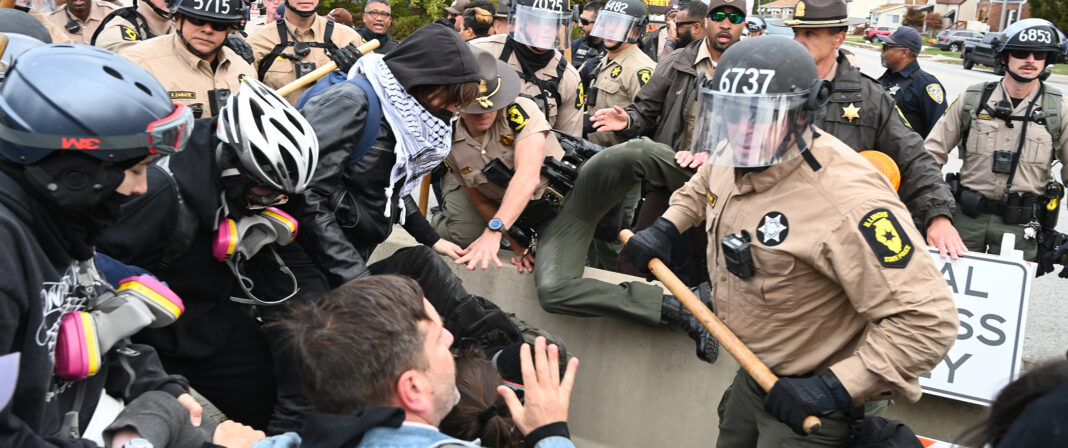Navigating Fear and Identity in a Hostile Environment
A Caged Existence
Over the past month, my world has shrunk to the confines of my home. My outings have only occurred when my husband, Brad, accompanies me, and even then, I approach each trip with cautious trepidation. Avoiding coffee shops—once my sanctuary for socializing—feels necessary, given that these venues have been the target of ICE raids primarily aimed at marginalized communities. The ambiance that once inspired creativity has devolved into a landscape fraught with anxiety, where the walls of my living room now serve as my academic fortress.
A Cycle of Grief
The emotional toll has been heavy. I find myself oscillating between sadness, anger, acceptance, and depression—a cyclical journey that mirrors the grieving process. Each day presents a new confrontation with my own identity, one that cherishes freedom yet now grapples with the fear of being forcibly separated from my loved ones. How does one reconcile the vibrant, free-spirited persona of a queer activist with the somber realities of life in a politically charged “blue city”? This question has become my constant companion.
Moments of Terror
Just last week, Brad and I ventured into a Starbucks, where a simple coffee run spiraled into a moment of terror. I remember the hot, familiar scent of hazelnut lattes mingling with the panic surging through my veins as a group of masked white men approached us, their intentions as clear as the threat in their eyes. “Where are your papers?” they demanded, their aggressive demeanor forcing me to tread carefully.
Brad, ever clever, offered that he could be an undocumented immigrant, a comment met with brutal disdain. “We are not talking to you, so shut the f*** up.” Such dismissive hostility forced me into a defensive stance, knowing that any misstep could lead to consequences I desperately wished to avoid. My heart pounded as I mustered enough courage to ask about their warrant, while I urged Brad to contact local officials.
Spiritual Preparedness
Months prior, I sensed such encounters were inevitable. My Mother Evangelist Idella Cora Thomas, someone deeply wise in spiritual matters, had instilled within me a discernment to recognize the contours of evil. Reaching out to family and friends to caution them about escalating political tensions often fell on deaf ears; even my own relatives dismissed my activism as divisive and counterproductive. One even questioned, “Why won’t you unite with us?” This simplistic call for unity ignores the complexities of systemic oppression.
The Anatomy of Oppression
Donald Trump is often vilified as a chief architect of our collective anxiety, but the reality is more grotesque: he embodies a deeper ailment, a symptom of entrenched systemic oppression, specifically white supremacy. This framework is not merely historical; it continues to infect our present-day political and religious landscapes. Thinkers like W.E.B. Du Bois outlined “white terror” as a structured means of sustaining power over Black communities—a terror that remains starkly evident today.
The Deliberate Nature of Violence
Understanding white terror as a deliberate campaign against communities of color elucidates why these acts feel so meticulously orchestrated. The tactics used—fire from tear gas, the shattering of car windows while children are present—serve a dual purpose: they intimidate while establishing a culture of fear. These actions serve as reminders that the past is never truly past; it is a visceral reality that seeps into the everyday lives of those in affected communities.
Historical Context and Contemporary Reality
Reflecting on America’s past, particularly the history of lynching, reveals the deeply embedded terror designed to suppress communities. Physical bodies were hung not just as a means to eliminate individuals but as a method of communicating a brutal cultural message—a warning to all. This historical legacy has formed the psychological backdrop against which contemporary violence continues to unfold.
Modern Implications
The recent ICE operations, particularly in neighborhoods like mine, are not isolated events. They are part of an enduring legacy of suppression that manifests in the daily lives of people with Black, brown, and yellow skin. Such tactics echo older forms of oppression, yet the modern landscape offers a stark contrast: the presence of compassionate bystanders using their privilege to combat these atrocities becomes a beacon of hope amid pervasive despair.
The Call to Action
Witnessing the violence unfold in real time—through social media and community alerts—many feel an urgent call to action, challenging the status quo and demanding accountability. The community has begun to mobilize, remaining vigilant in the face of systemic violence and standing resolute against the bullying tactics of those in power.
Building Legacy Through Spirit Work
Our task is not merely to confront this new reality; it is to foster a community that values legacy and the transformative power of love. History shows us that true legacy is not built on oppression but through genuine connections and collective uplift. As individuals and as a community, we must work towards tangible outcomes that resonate with our shared humanity.
Faith as an Anchor
As a minister, the wisdom of my faith traditions informs my outlook. Dark days may loom, but history reveals a pattern of resilience. The narrative of Good Friday reminds us that moments of despair are often precursor to profound renewal. Across various sacred texts—from the Torah to the Quran to Buddhist teachings—messages of light triumphing over darkness persist, urging us to remain steadfast in our quest for justice and community.
Each sacred tradition speaks to a universal truth: regardless of the darkness we face, hope and community solidarity can illuminate our path forward.



